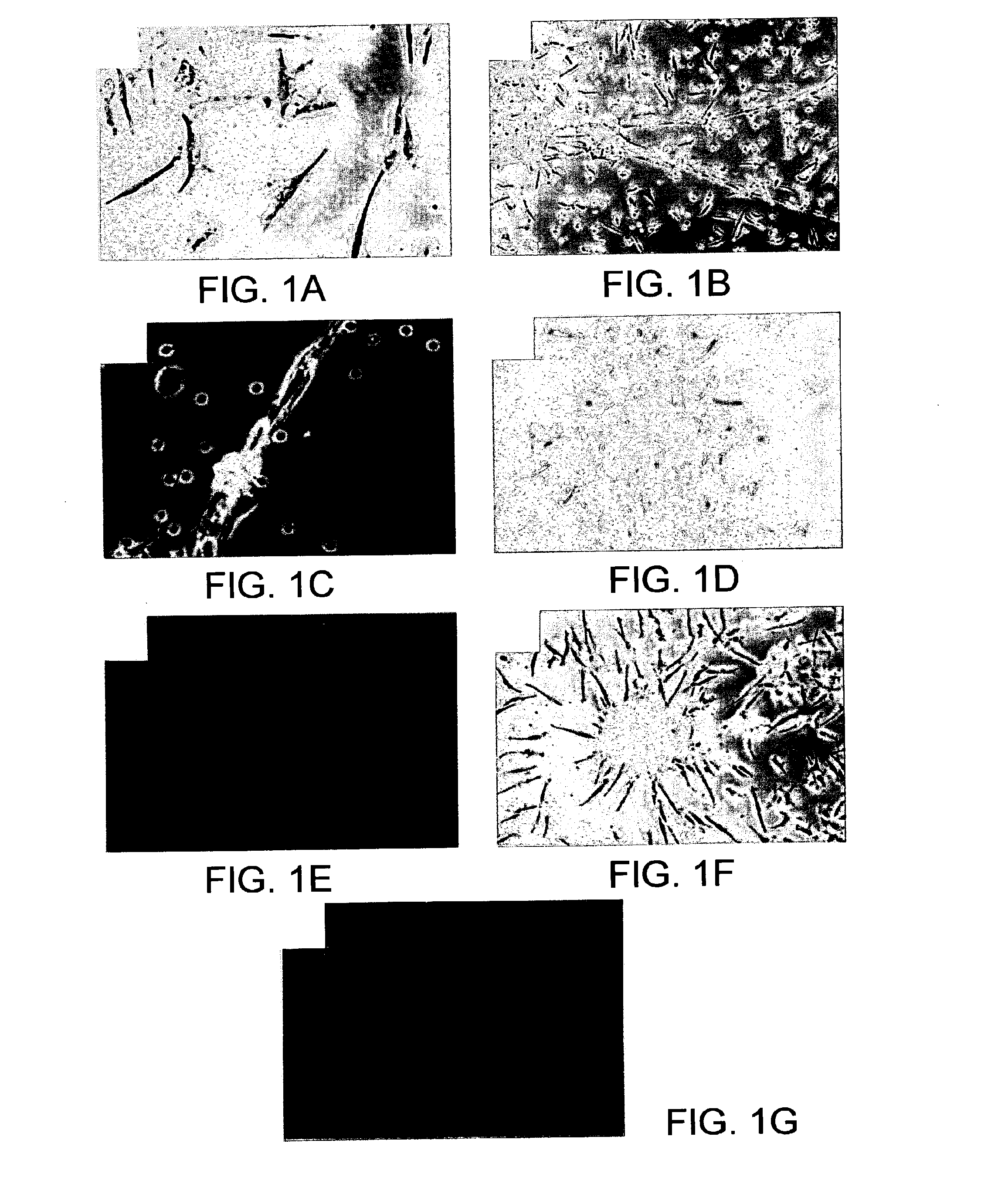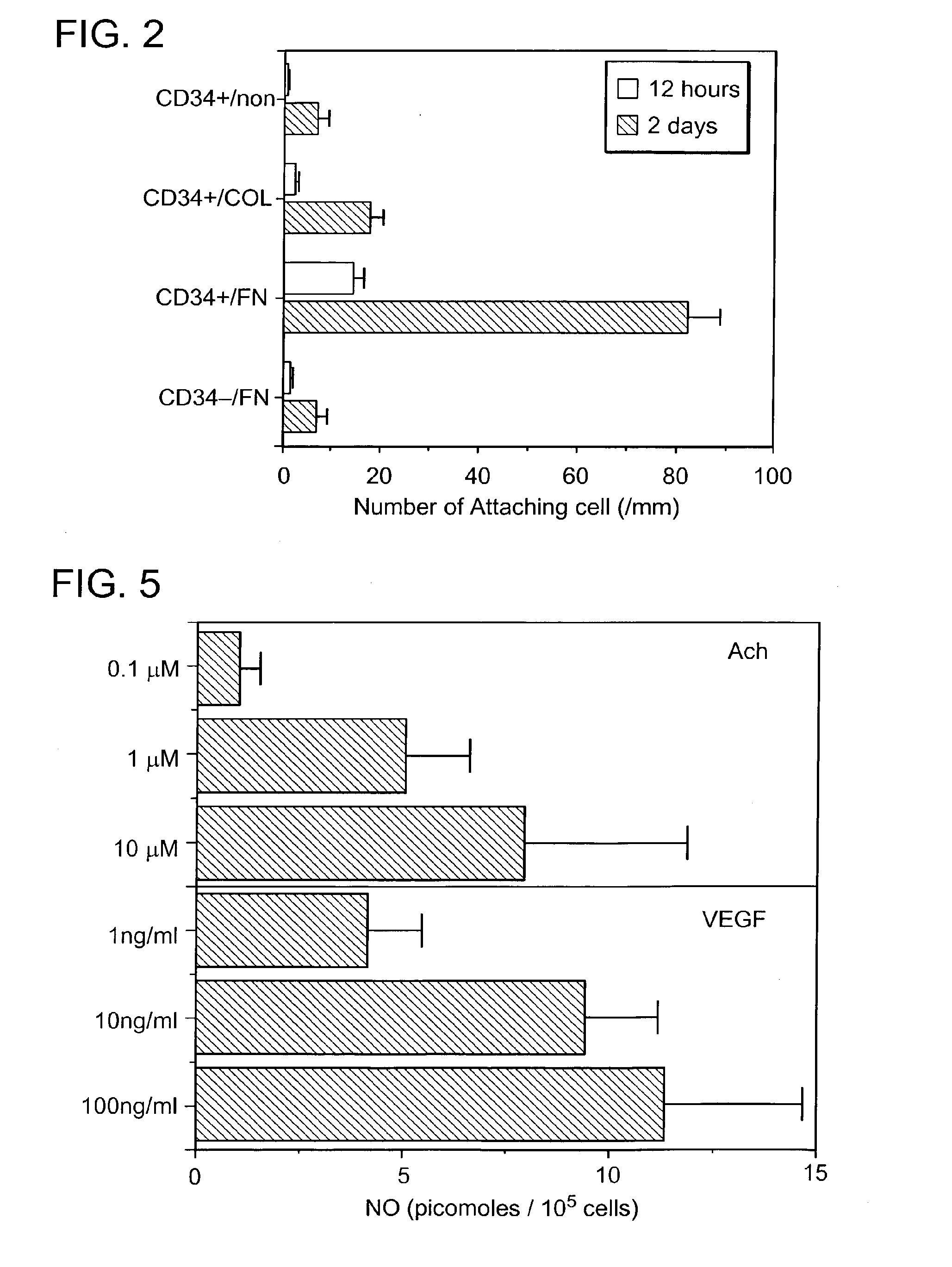Compositions and methods for regulating angiogenesis
a technology compositions, applied in the field of endothelial progenitor cells isolating and using endothelial progenitor cells, can solve the problems of insufficient current treatment of these diseases, insufficient or excessive blood vessel growth, and severe consequences of inappropriate angiogenesis, so as to reduce undesired angiogenesis, inhibit angiogenesis, and enhance angiogenesis
- Summary
- Abstract
- Description
- Claims
- Application Information
AI Technical Summary
Benefits of technology
Problems solved by technology
Method used
Image
Examples
example 1
Method and Materials
[0085]Human peripheral blood was obtained using a 20 gauge intravenous catheter, discarding the first 3 ml. Leukocyte fraction of blood was obtained by Ficoll density gradient centrifugation and plated on plastic tissue culture for 1 hr to avoid contamination by differentiated adhesive cells.
[0086]Fluorescent activated cell sorting (FACS) was carried out with >1×106 CD34 positive and negative mononuclear blood cells (MBCD34+, MBCD34−). Cells were analyzed with Becton-Dickinson FACS sorter and the lysis 11 analysis program using antibodies to CD34 (Biodesign).
[0087]M-199 medium with 20% FBS and bovine brain extract (Clonetics) was used as standard medium for all cell culture experiments.
[0088]C57BL / 6Jx129 / SV background male mice (Hirlan), 3 mo old and 20-30 g, were used in these experiments (n=24). Animals were anesthetized with 160 mg / kg intraperitoneally of pentobarbital. The proximal end of one femoral artery and distal portion of the corresponding saphenous ar...
example ii
EC Progenitors Augment Reendothelialization
[0103]Following balloon injury, a denuded rat carotid artery was immediately excised and placed in culture in HUVEC medium, and DiI labeled CD34+ EC progenitor cells were seeded onto the artery. After 1 wk, the artery was washed with PBS to remove non-adherent cells. Consistent with the ability of CD34+ cells to differentiate into filtrating cells, DiI labeled cells were found within the smooth muscle cell layer of the artery. Scanning electron microscopy of the intimal surface, however, showed that DiI-labeled cells also had adhered to the denuded arterial surface, assuming a morphology suggestive of ECs (FIG. 9). DiI labeled cells also incorporated into the capillary-like sprouts at the hare ends of the excised arterial segment, suggesting that CD34+ cells may be capable of participating in angiogenesis as well.
[0104]To determine if exogenously administered CD34+ EC progenitor cells can contribute to reendothelializationr of a denuded art...
PUM
| Property | Measurement | Unit |
|---|---|---|
| turnover time | aaaaa | aaaaa |
| temperature | aaaaa | aaaaa |
| temperature | aaaaa | aaaaa |
Abstract
Description
Claims
Application Information
 Login to View More
Login to View More - R&D
- Intellectual Property
- Life Sciences
- Materials
- Tech Scout
- Unparalleled Data Quality
- Higher Quality Content
- 60% Fewer Hallucinations
Browse by: Latest US Patents, China's latest patents, Technical Efficacy Thesaurus, Application Domain, Technology Topic, Popular Technical Reports.
© 2025 PatSnap. All rights reserved.Legal|Privacy policy|Modern Slavery Act Transparency Statement|Sitemap|About US| Contact US: help@patsnap.com



